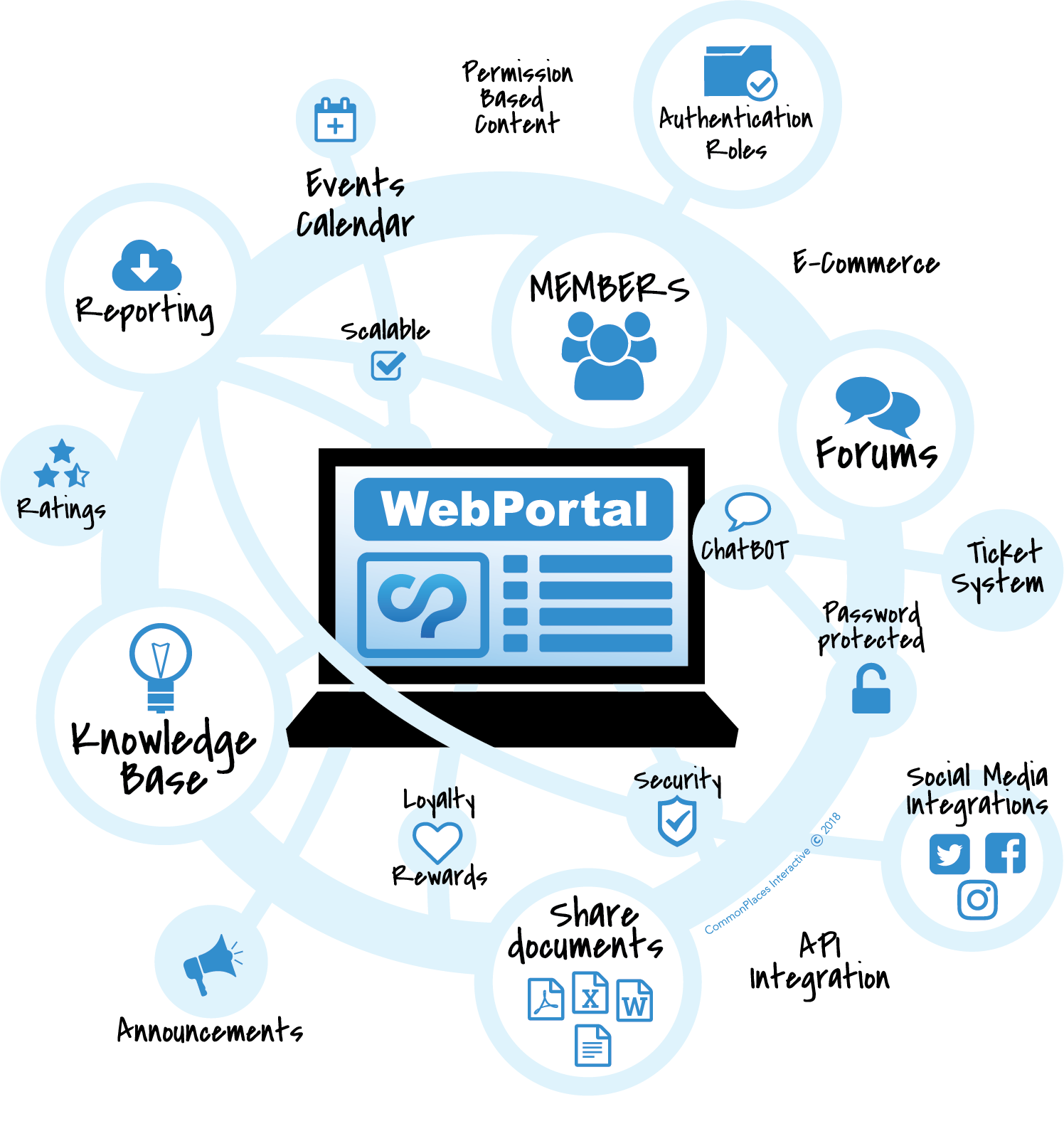Sometimes the terms “Web Portal” or “Customer Portal” and “Company Intranet” can get lost in translation when working on a web development project for your business. We are here to guide you, and help you distinguish between the two so that you can make an informed decision in choosing the most fitting set of online services to suit your company needs. Let’s go!
in·tra·net
/ˈintrəˌnet/
noun
a local or restricted communications network, especially a private network created using World Wide Web software.
(source: Oxford Languages via Google)
________________
por·tal
/ˈpôrdl/
noun
-
a doorway, gate, or other entrance, especially a large and imposing one.
Similar: doorway; gateway; entrance; way in; way out; exit; egress; opening; door; gate;
threshold; entryway
a website or web page providing access or links to other sites.
“many healthcare providers already utilize portals through which a patient can access test results”
(THAT’S THE ONE)
(source: Oxford Languages via Google)
An intranet is basically an elite members-only club for your company – and ONLY your company.
Your company intranet can be a robust pool of information within your company such as: benefits information, industry news, training schedules, timesheets, policy pins, internal job postings and more. All of this information is valuable for helping employees and managers get work done and stay connected to your business.
A company intranet that implements a simple user interface and a rich search tool will enable employees to continuously locate the company information they need in a short amount of time. As an example, you may find a company intranet page to provide a dashboard, of sorts, where you can find and download standardized forms and templates, information about upcoming meetings and events, and news of internal job postings to which you can apply for career advancement.
A customer portal goes beyond the intranet.
While an intranet is solely a resource for employees, a customer experience portal allows a role-based (permissions-based) site that gives both customers and company team members an area to interact with other customers, your team, and your brand. It acts as a secure hub on your company website that gives your customers straightforward access to all the necessary information about doing business together with your company. With a customer portal, users can:
-
Create a secure login to your site
-
Make appointments
-
Store shipping and billing information
-
Create and follow service tickets
-
Update payment information and pay for products and services
-
Keep transaction records and order information
-
View and update profile information
-
Interact with forums of other customers who have interest in your brand or products
-
and more
A customer portal can be a robust interactive resource for businesses who offer vast knowledge bases too – You can provide customers with a place to browse and reference downloadable ebooks, forms, and other printable materials, and offer them a place to upload completed forms. Because the portal acts like an intranet, it can also serve as an informational hub for your employees.
Much like a call-in automated system works, (think about when you call your bank) where you are able to select different options for different departments, a portal provides this user-serviceability in a MUCH more easy-to-use visual format on your screen. Many portals even implement chatbots and live chat in case your customers need more specific assistance – all right at their fingertips.
Take an in-depth look at the Customer Journey where we talk more about the benefits of Customer Experience Portals.
Now you know the difference, let’s get going!
While the company intranet and customer portal play two different roles, they can be effectively used together to provide your employees and customers a streamlined way to interact with your business 24/7. Here at CommonPlaces, we’re experts on both, and can get you set up with a robust, professional site that makes it easy for EVERYONE!
Get in touch to find out more, and get a free assessment to find out the perfect scope of online resources that are right for your business.



